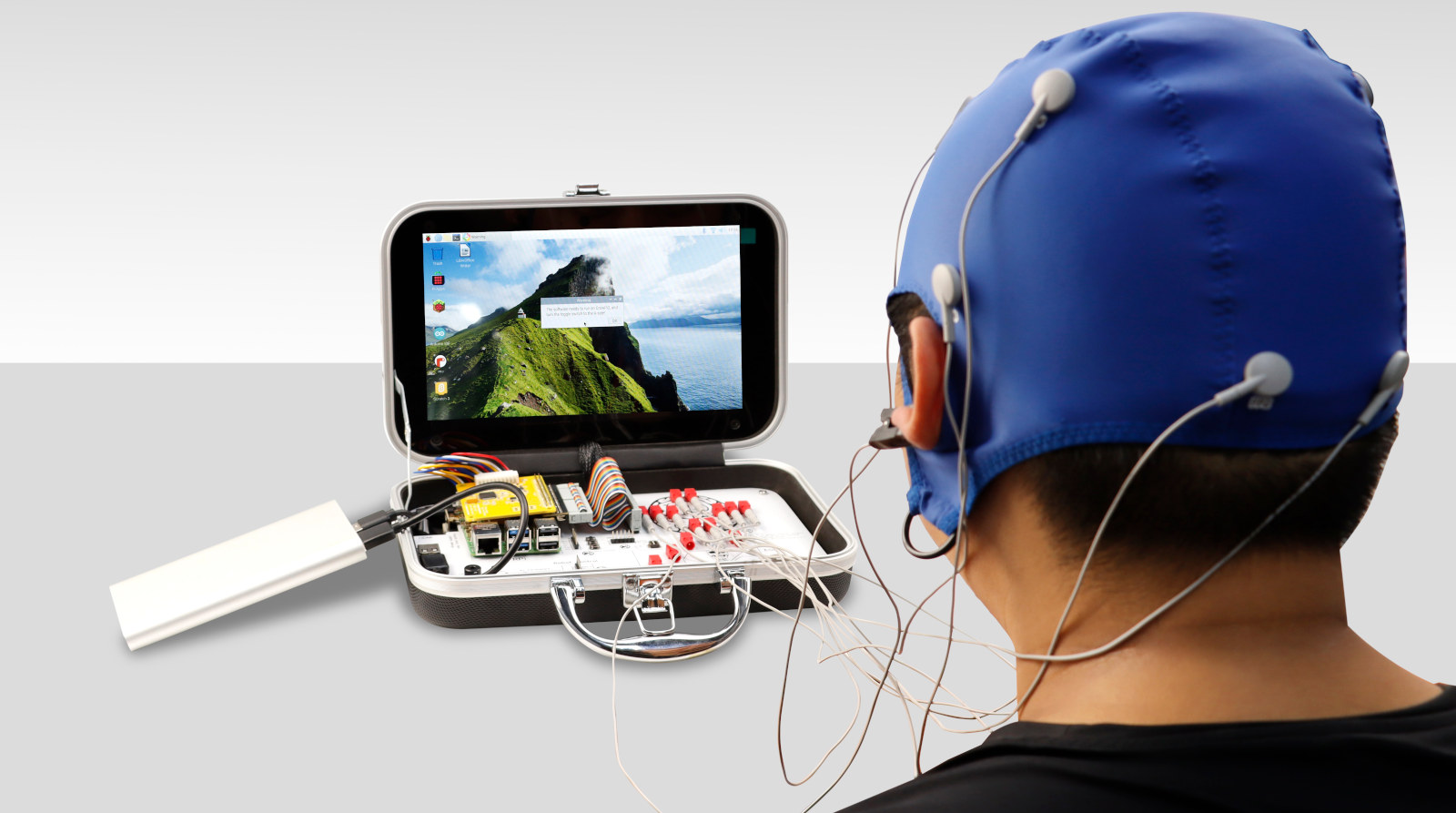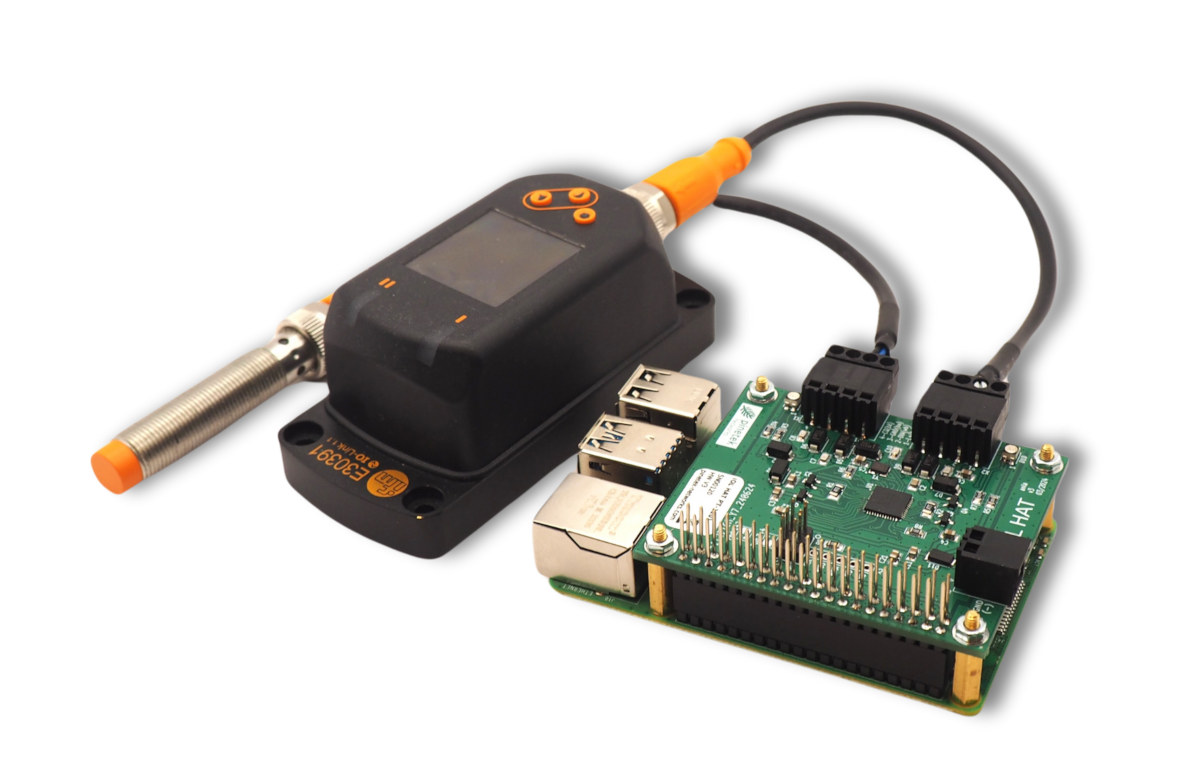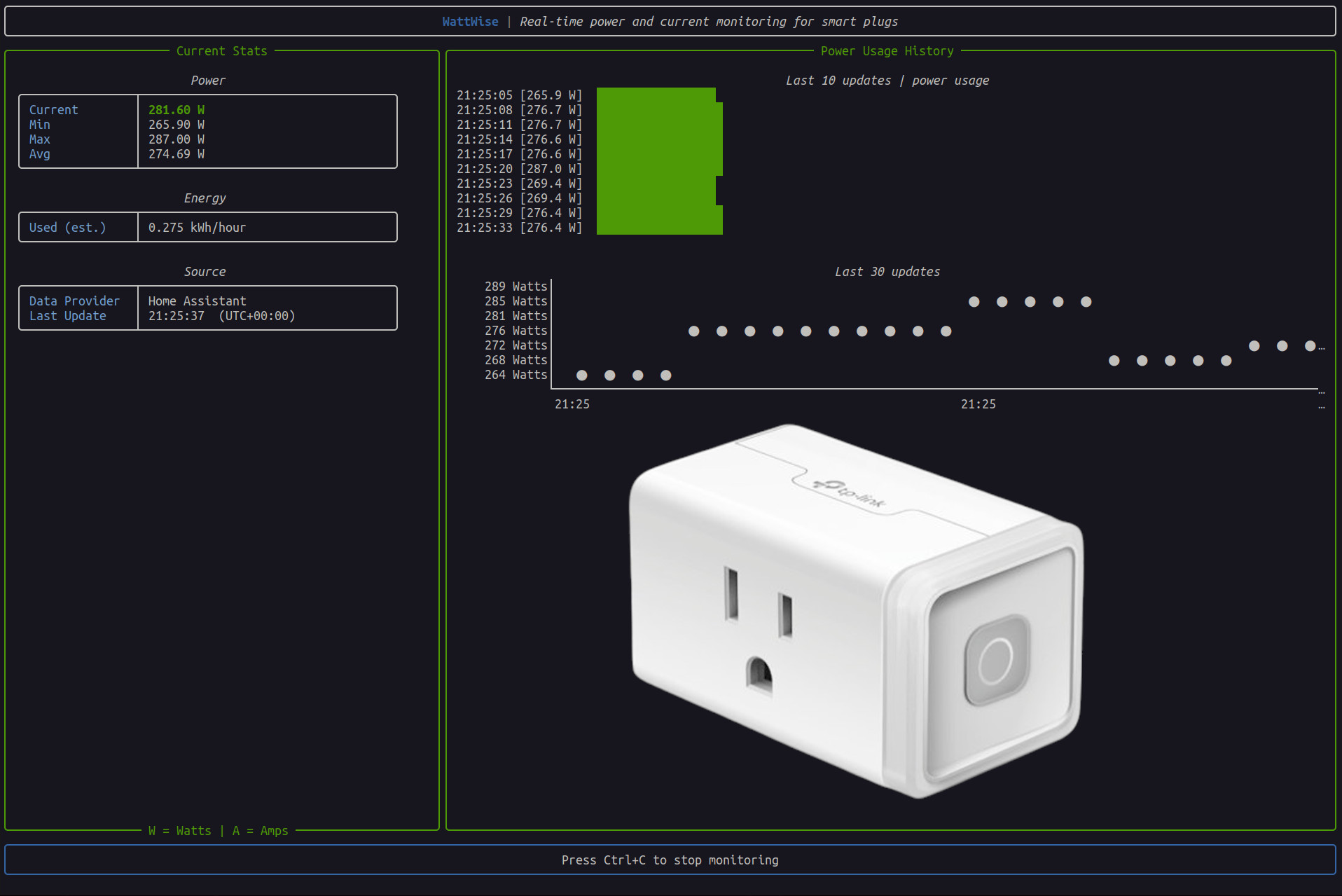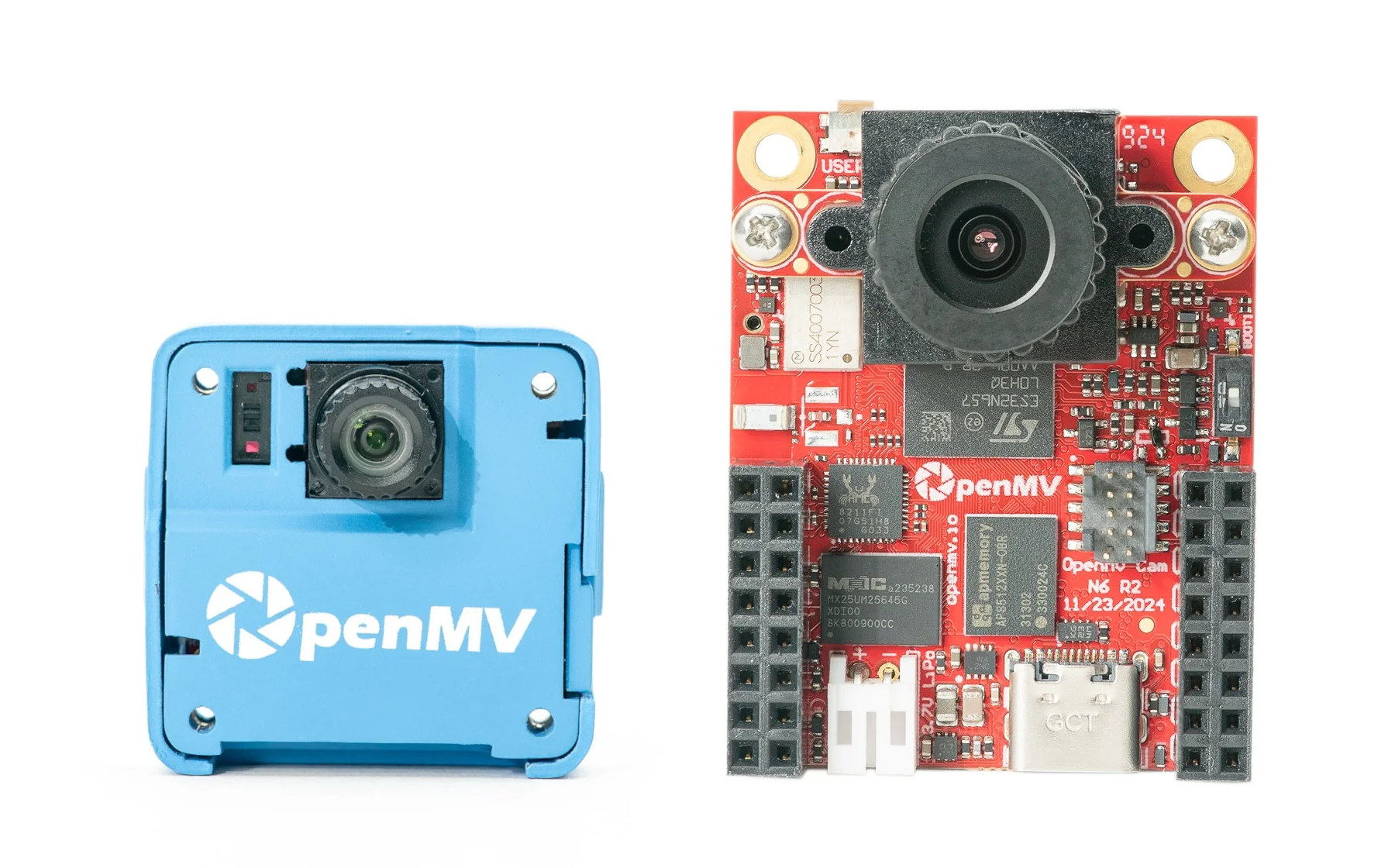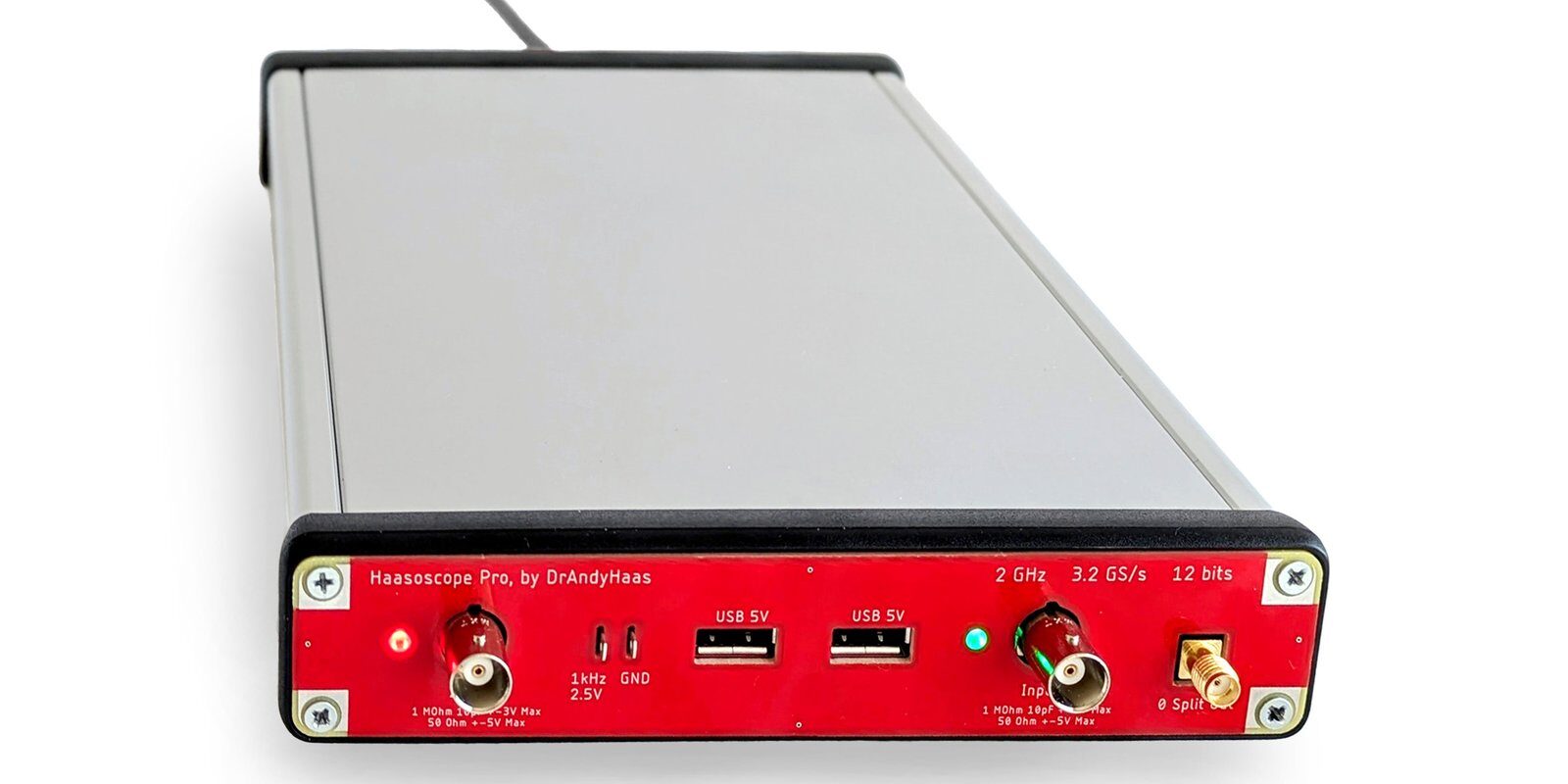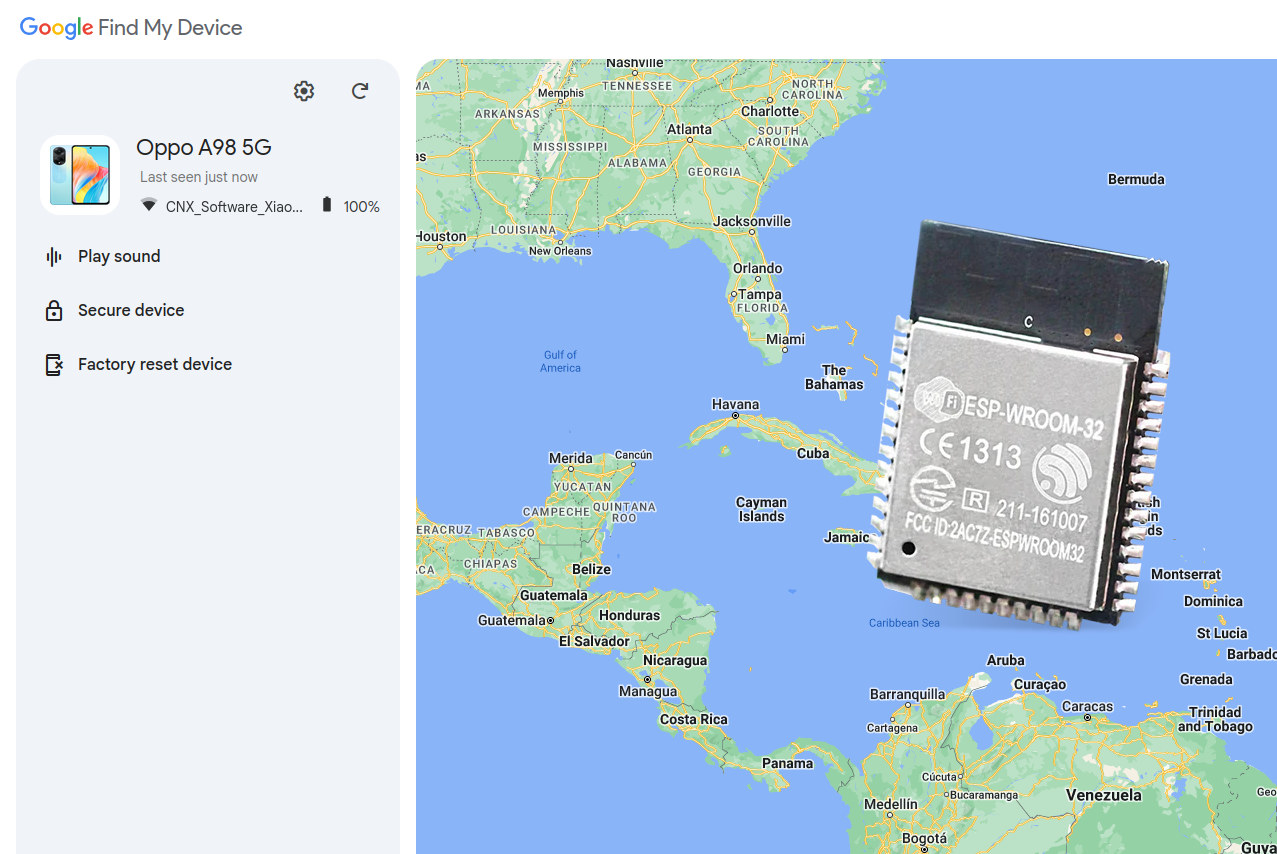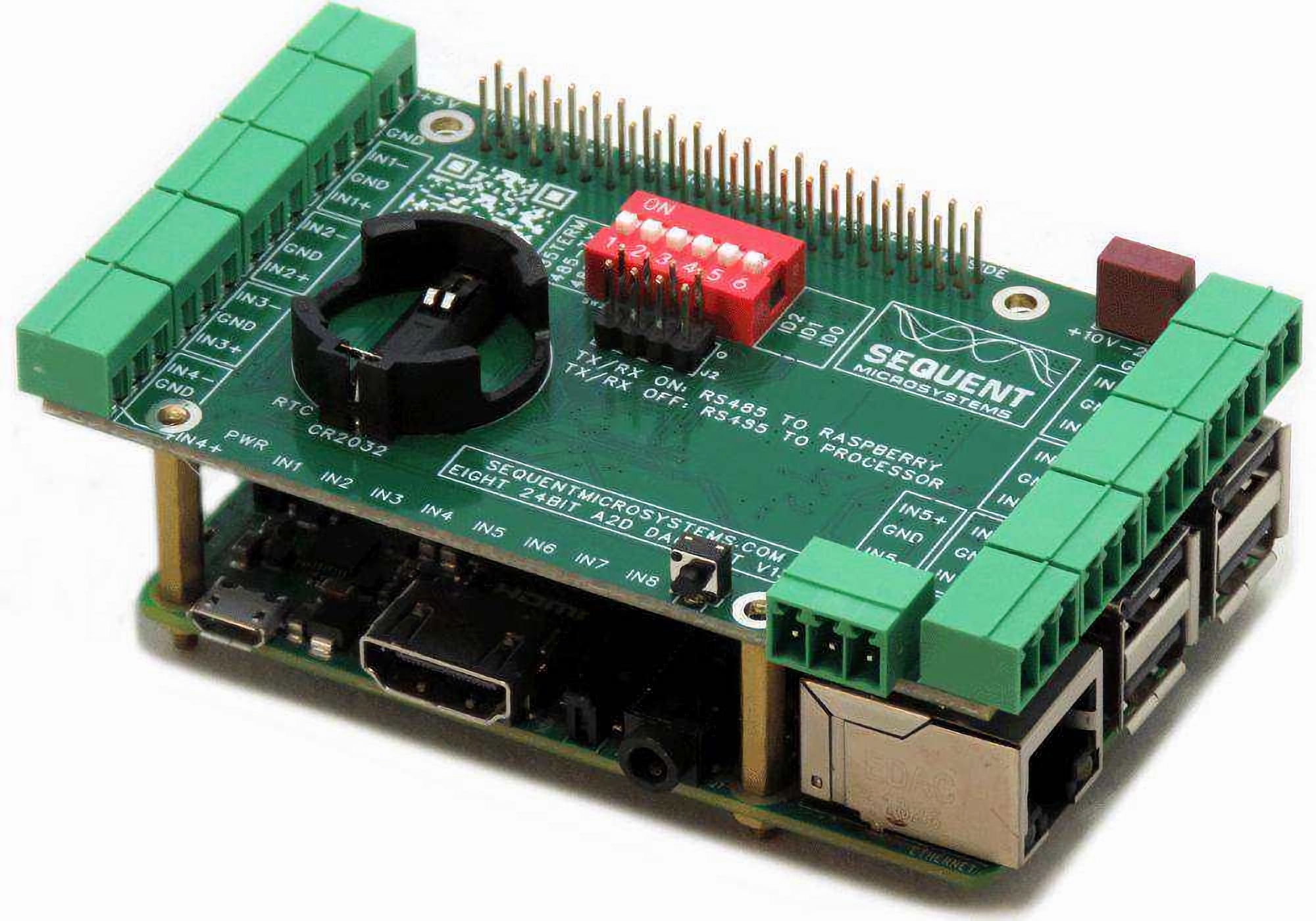Yesterday we wrote about using quantum sensors for brain-computer interfaces (BCI) and other biomedical applications. But that’s the future, and if you want to experiment with brain-computer interface technology and bioscience, the PiEEG kit has everything you need to get started, with all components fitting in a suitcase easy to carry around between your home and university or school. The bioscience home lab is based on the PIEEG Shield for Raspberry Pi introduced in 2023, and features a Raspberry Pi 5 8GB, a 9-inch display, a sensor board, EEG electrodes and cables for brainwave measurement, and electrodes for EMG (muscles), EKG (heart), and EOG (eye) signal recording. The PiEEG kit is comprised of the two main custom boards with the following specifications/features: PiEEG Shield on top of the Raspberry Pi 5 ADC – Texas Instruments ADS1299 Analog-to-Digital Converter for biopotential measurements Host interface – 40-pin GPIO header with SPI protocol […]
IOL HAT adds an IO-Link compatible master to Raspberry Pi for industrial IoT sensors and actuators
Pinetek Networks’ IOL HAT is a Raspberry Pi expansion board using the IO-Link (IEC 61131-9) protocol to interact with industrial sensors. It’s based on the Analog Devices MAX14819 IO-Link master transceiver and offers two SDCI (“Single-Drop Digital Communication”) connectors. While work on the IO-Link communication protocol started in 2006, and the IEC 61131-9 “Single-drop digital communication interface (SDCI) for small sensors and actuators” standard was adopted in 2013, it only recently came onto our radar with products like the STMicro EVLIOL4LSV1 IO-Link actuator board and Renesas CCE4511 IO-Link master and ZSSC3286 IO-Link sensor signal conditioner. The IOL HAT brings the IO-Link standard for industrial IoT communication to the Raspberry Pi. IOL HAT specifications: IO-Link chip – Analog Devices MAX14819 dual IO-Link master transceiver with integrated framers and L+ supply controllers 2x SDCI ports for IEC 61131-9 (IO-Link) sensors and actuators Host connection (one or the other) PT-1201 model – 40-pin […]
WattWise – A command line tool for smart power plugs with energy monitoring
Smart Power plugs help users monitor their appliances’ power consumption, and they’d usually check measurements in a mobile app or a web dashboard. Naveen was not satisfied with this workflow while using a TP-link Kasa EP25 Smart Plug to monitor his LLM workstation’s power consumption. So he wrote the WattWise command-line interface (CLI) for power monitoring smart plugs to allow him to throttle his power-hungry, dual AMD Ryzen EPYC 7C13 workstation following his utility’s Time of Use (ToU) pricing in order to lower his electric bill. The Python tool pulls power usage data from smart plugs directly or through Home Assistant and presents it in a neat terminal-based UI. Key features: Real-time power monitoring with wattage and current display Color-coded power values (green < 300W, yellow 300-1200W, red > 1200W) Historical consumption charts directly in the terminal Automatic CPU/GPU throttling based on time-of-use electricity pricing Configurable power thresholds and performance […]
MicroPython-programmable OpenMV N6 and AE3 AI camera boards run on battery for years (Crowdfunding)
OpenMV has launched two new edge AI camera boards programmable with MicroPython: the OpenMV AE3 powered by an Alif Ensemble E3 dual Cortex-M55, dual Ethos-U55 micro NPU SoC, and the larger OpenMV N6 board based on an STMicro STM32N6 Cortex-M55 microcontroller with a 1 GHz Neural-ART AI/ML accelerator. Both can run machine vision workloads for several years on a single battery charge. The OpenMV team has made several MCU-based camera boards and corresponding OpenMV firmware for computer vision, and we first noticed the company when they launched the STM32F427-based OpenMV Cam back in 2015. A lot of progress has been made over the years in terms of hardware, firmware, and software, but the inclusion of AI accelerators inside microcontrollers provides a leap in performance, and the new OpenMV N6 and AE3 are more than 100x faster than previous OpenMV Cams for AI workloads. For example, users can now run object […]
Haasoscope Pro open-source, real-time sampling USB oscilloscope supports up to 2GHz bandwidth (Crowdfunding)
The Haasoscope Pro is an open-source hardware, high-bandwidth, and real-time sampling USB oscilloscope. Building upon its predecessor, the Haasoscope, the new Pro model offers a bandwidth of 2GHz, 12-bit resolution, and a 3.2GS/s sampling rate. The Haasoscope Pro USB oscilloscope is “designed to be low cost, while maintaining super-fast performance.” While it only comes with 2 channels, the flexible design makes it possible to combine and sync multiple devices (using Cat5 cables) to double the sample rate or add more channels. The oscilloscope works with standard x10 passive probes but a custom active probe, the Haasoscope Pro-be, is also offered. It supports the full 2GHz analog bandwidth and is priced much cheaper than similar probes. The Haasoscope Pro USB oscilloscope’s high sampling rate and bandwidth make it ideal for radio frequency signal analysis and high-speed digital debugging. It is similar to the ThunderScope Thunderbolt and PCIe oscilloscope which offers more […]
GoogleFindMyTools locates ESP32-based Bluetooth trackers using Google Find My Device network
Leon Böttger’s GoogleFindMyTools is a re-implementation of Google’s Find My Device network. It works with Android devices and commercial trackers, but experimental support for ESP32-based trackers has recently been added.
The implementation features two components. First, the main.py Python script that will list and locate devices, and then the ESP32 firmware implemented in C with the ESP-IDF. The host computer will also need several Python libraries that can be installed with “pip install -r requirements.txt” and Google Chrome web browser.
This is the output of the Python script on my Ubuntu laptop:
Stackable HAT brings high-resolution 24-bit ADC to Raspberry Pi (Crowdfunding)
Sequent Microsystems’ “Eight 24-bit ADC 8-layer Stackable HAT” is a Raspberry Pi expansion board designed for home automation projects. It is compatible with all Raspberry Pi models with a 40-pin GPIO header and features a stackable design that provides scalability for more complex setups. It includes eight independent 24-bit ADC channels, providing ultra-high resolution for measuring small analog signals accurately. It also features programmable gain amplifiers on each input channel for amplifying weak signals and optimizing the ADC’s input range. It is stackable up to eight layers, allowing for up to 64 differential analog inputs. It provides 4A continuous and 5A peak power to the Raspberry Pi via the GPIO header. It sends data via the I2C lines, leaving all other pins free for use. Also, it supports isolated RS485 communication for long-distance connectivity. The 8-layer Stackable HAT for Raspberry Pi is suitable for precision data acquisition applications, including industrial […]
Adafruit’s PioMatter library adds HUB75 RGB LED Matrix support to the Raspberry Pi 5
The Raspberry Pi 5 brought a more powerful CPU and GPU and faster I/Os compared to the Raspberry Pi 4, as well as some incompatibilities. While the transition from a Raspberry Pi 4 to a Raspberry Pi 5 is usually painless for most applications, Adafruit notes that the ability to drive HUB75 RGB LED matrices was lost on the Raspberry Pi 5 which now relies on the Raspberry Pi RP1 peripheral control to drive GPIOs instead of the Broadcom processor directly controlling them. The company has now addressed that by using the PIO (Programmable I/O) block in the RP1 chip, yes that’s the same PIOs as found in the RP2040 or RP2350 microcontroller, to drive HUB75 RGB LED matrices from the Raspberry Pi 5, and their work can be found on the Adafruit-Blinka-Raspberry-Pi5-Piomatter repository on GitHub. The instructions to install the Adafruit Blinka Raspberry Pi 5 PioMatter library (or just […]


